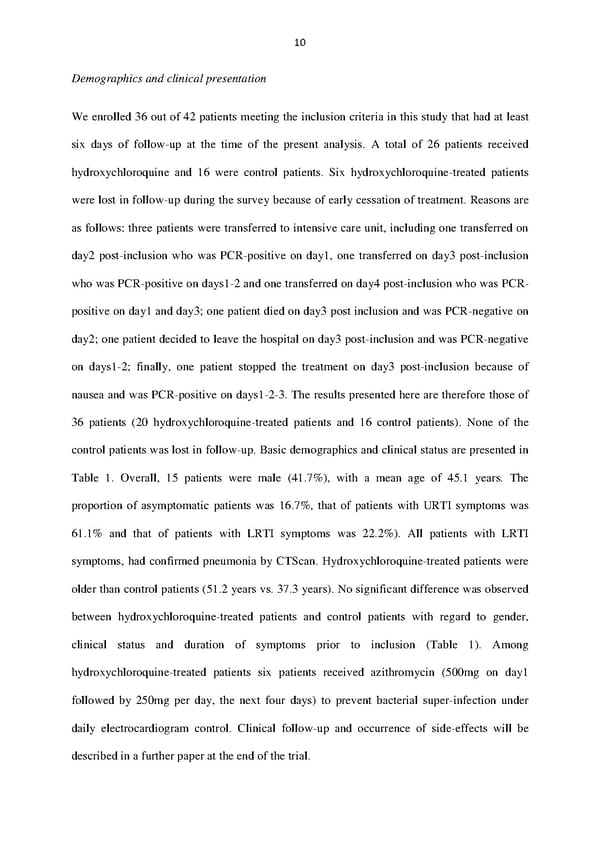10 Demographics and clinical presentation We enrolled 36 out of 42 patients meeting the inclusion criteria in this study that had at least six days of follow-up at the time of the present analysis. A total of 26 patients received hydroxychloroquine and 16 were control patients. Six hydroxychloroquine-treated patients were lost in follow-up during the survey because of early cessation of treatment. Reasons are as follows: three patients were transferred to intensive care unit, including one transferred on day2 post-inclusion who was PCR-positive on day1, one transferred on day3 post-inclusion who was PCR-positive on days1-2 and one transferred on day4 post-inclusion who was PCR- positive on day1 and day3; one patient died on day3 post inclusion and was PCR-negative on day2; one patient decided to leave the hospital on day3 post-inclusion and was PCR-negative on days1-2; finally, one patient stopped the treatment on day3 post-inclusion because of nausea and was PCR-positive on days1-2-3. The results presented here are therefore those of 36 patients (20 hydroxychloroquine-treated patients and 16 control patients). None of the control patients was lost in follow-up. Basic demographics and clinical status are presented in Table 1. Overall, 15 patients were male (41.7%), with a mean age of 45.1 years. The proportion of asymptomatic patients was 16.7%, that of patients with URTI symptoms was 61.1% and that of patients with LRTI symptoms was 22.2%). All patients with LRTI symptoms, had confirmed pneumonia by CTScan. Hydroxychloroquine-treated patients were older than control patients (51.2 years vs. 37.3 years). No significant difference was observed between hydroxychloroquine-treated patients and control patients with regard to gender, clinical status and duration of symptoms prior to inclusion (Table 1). Among hydroxychloroquine-treated patients six patients received azithromycin (500mg on day1 followed by 250mg per day, the next four days) to prevent bacterial super-infection under daily electrocardiogram control. Clinical follow-up and occurrence of side-effects will be described in a further paper at the end of the trial.
 Hydroxychloroquine and Azithromycin as a Treatment of COVID-19 Page 9 Page 11
Hydroxychloroquine and Azithromycin as a Treatment of COVID-19 Page 9 Page 11